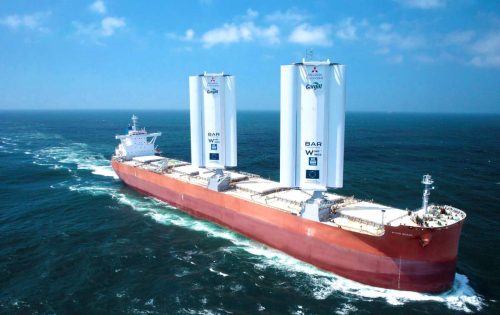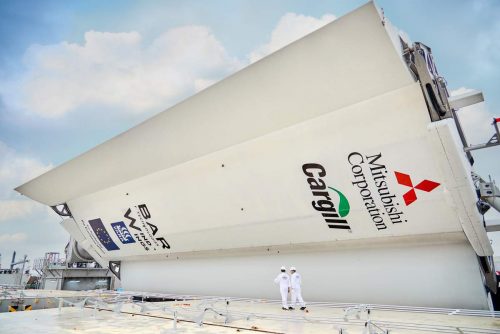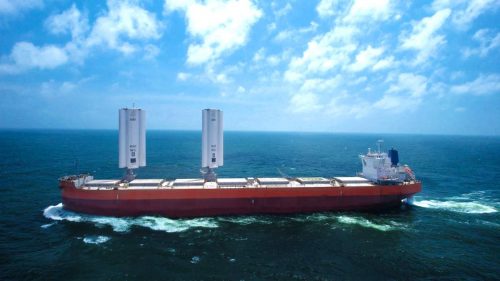On August 21, a cargo ship traveling from Singapore to Brazil became the first to try out a new kind of sail. The sail is expected to save fuel and cut pollution. If it works well, similar sails could become common on cargo ships over the next few years.
The new sail is called a “WindWing”. When the ship is at sea, the WindWing can be raised and turned to catch the wind, helping the ship move forward. When the ship is in port, or when the weather is rough, the WindWing can be folded down flat on the ship’s deck.
Cargill, a huge American food company, had the idea to create the sail. Because it depends on ships to transport its food, Cargill was interested in finding ways to reduce pollution from its shipping operations.

(Source: Cargill.)
Shipping produces a huge amount of pollution. About 2.1% of the world’s CO2 pollution comes from shipping. In recent years, that number has been increasing. In July, shipping companies promised to become carbon neutral “by or around 2050”.
But since huge cargo ships depend on fossil fuels, finding ways to cut emissions is difficult. So Cargill decided to try looking at how ships used to move, long before fossil fuels became common – wind power.
Cargill asked the British company BAR Technologies to design a sail for cargo ships. BAR was started by Ben Ainslie, a champion sailor.

(Source: Cargill.)
BAR designed a massive wing. It stands 123 feet (37.5 meters) tall, and is made of a strong material similar to that used for wind turbines. The center section of the sail is 33 feet (10 meters) across. On either side of that is a moving wing that’s 16.5 feet (5 meters) wide. Not only can the WindWing be raised and lowered, each section can be turned in many different ways to catch the wind in the best and safest way.
A company called Yara Marine built the WindWings, which were then put on the Pyxis Ocean – a cargo ship owned by Mitsubishi. In tests, the Pyxis Ocean was able to reach speeds of up to 6 mph (10 kph) using just the WindWings, and no fuel at all.
Normally, the Pyxis Ocean will use fuel, but it aims to use far less by letting the wind help out. Cargill says computer studies show that each WindWing can save 1.65 tons (1.5 tonnes) of fuel every day. The Pyxis Ocean has two WindWings. Cargill says these should cut the ship’s pollution by about 30%.

(Source: Cargill.)
The Pyxis Ocean will take six weeks to reach Brazil. Cargill plans to carefully study the results to learn how well the WindWing worked, and whether it can be improved.
The exciting thing about WindWings is that, if they work well, they can be made to fit many cargo ships that are currently running on fossil fuels. John Cooper, who runs BAR, says that by 2025, he expects half of new cargo ships to come with some sort of wind power.
Later this month, another cargo ship will leave Shanghai, China – this time with four WindWings.
Did You Know…?
Wind is a powerful natural force. In many areas of the ocean, there are known wind patterns that sailors have counted on for centuries. Jan Dieleman, who works for Cargill, says that in the future, ships might begin taking different paths across the ocean, just to make the most of these winds.
